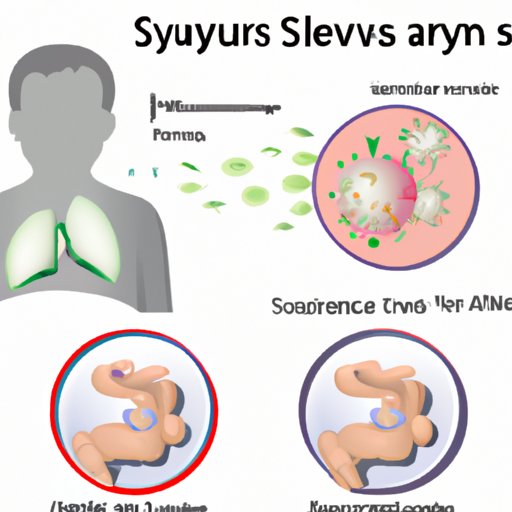
Introduction
Respiratory syncytial virus (RSV) is a common respiratory infection that affects people of all ages, particularly infants and young children. This virus can easily spread from person to person through contact with respiratory secretions or contaminated surfaces. RSV infection can range from mild to severe and can lead to serious complications, especially in infants and older adults with weak immune systems. Understanding the latency period of RSV infection is crucial for preventing the spread of this disease and seeking prompt medical attention when necessary.
The Invisible Threat: Understanding the Latency Period of RSV Infection
The latency period of RSV infection refers to the time between exposure to the virus and the onset of symptoms. This period can range from 2 to 8 days, depending on various factors such as age, overall health, and immune system strength. During this period, the virus replicates within the body, but the individual may not experience any symptoms. Knowing the latency period of RSV infection is important because it allows individuals to take preventive measures to avoid the spread of the virus.
Unveiling the Mystery: How Long Does It Take to Develop RSV Symptoms?
The incubation period for RSV infection is typically 2 to 8 days, and symptoms can appear gradually or suddenly. Common symptoms of RSV infection include coughing, sneezing, fever, nasal congestion, and wheezing. In severe cases, RSV can also cause difficulty breathing, rapid breathing, and bluish discoloration of the skin.
The severity of symptoms can vary depending on the individual’s age and overall health. Infants, older adults, and people with weakened immune systems are more likely to experience severe symptoms and complications.
RSV Contagion: When Will You Start Showing Symptoms?
RSV spreads easily from person to person through respiratory secretions such as mucus and saliva. The virus can also survive on surfaces for several hours, making it easy to contract the virus by touching contaminated surfaces and then touching your mouth, nose, or eyes.
People infected with RSV can be contagious for up to 8 days, even if they are not showing any symptoms. Children can remain contagious for several weeks after the symptoms have disappeared. It is important to take precautions to prevent the spread of RSV, including frequent hand washing, avoiding close contact with people who are sick, and avoiding touching your face.
Exploring the RSV Incubation Period: When Should You See A Doctor?
RSV symptoms may take up to 8 days to appear, and in many cases, the infection resolves on its own within 1 to 2 weeks. However, in severe cases, RSV can lead to pneumonia or bronchiolitis, which can be life-threatening.
If you or your child develop symptoms of RSV infection, it is important to seek medical attention if the symptoms are severe, if they last for more than a week, or if there is difficulty breathing or bluish discoloration of the skin. Your healthcare provider may perform a physical exam, order laboratory tests, or prescribe antiviral medications to help manage the symptoms and prevent complications.
The RSV Timeline: When to Expect Symptoms and How to Prepare
To summarize, RSV infection has a latency period of 2 to 8 days and can cause symptoms such as coughing, sneezing, fever, nasal congestion, and wheezing. People infected with RSV can be contagious for up to 8 days, and children can remain contagious for several weeks after the symptoms have disappeared.
To prevent RSV infection, it is important to practice good hygiene such as frequent hand washing, avoiding close contact with people who are sick, and avoiding touching your face. If you or your child develop symptoms of RSV infection, seek medical attention if the symptoms are severe or last for more than a week.
Conclusion
Respiratory syncytial virus (RSV) is a common respiratory infection that can have serious complications, especially in infants and older adults with weak immune systems. Understanding the latency period of RSV infection is crucial for preventing the spread of this disease and seeking prompt medical attention when necessary. Remember to practice good hygiene and seek medical attention if you develop severe symptoms or if symptoms last for more than a week.




